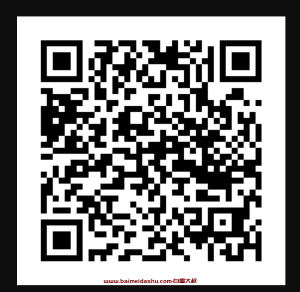个人笔记,不保证正确。
虽然说看到很多人不看好 asyncio,但是这个东西还是必须学的。。基于协程的异步,在很多语言中都有,学会了 Python 的,就一通百通。
一、生成器 generator {#一生成器-generator}
Python 的 asyncio 是通过 generator 实现的,要学习 async,先得复习下 generator.
1. yield {#1-yield}
众所周知,yield 是用于定义 generator 函数的关键字,调用该函数,会返回一个 generator
|-------------------------------------|-----------------------------------------------------------------------------------------------------------------------------------------------------------------------------------------------------------------------------------------------------------------------------------------------------------------------------------------------------------------------------------------------|
| 1 2 3 4 5 6 7 8 9 10 11 12 13 14 15 | python >>> def f(): ... yield 1 ... yield 2 ... >>> f() # 返回的是 generator <generator object f at 0x7f672c460570> >>> g = f() >>> next(g) # 通过 next 方法从 generator 获取值 1 >>> g.__next__() # next 方法实际是调用了 generator 的 __next__ 方法 2 >>> next(g) # 生成器运行结束,产生一个 StopIteration 的 exception Traceback (most recent call last): File "<stdin>", line 1, in <module> StopIteration |
每次调用 next,generator 都只会运行到下一个 yield 关键字所在行,返回 yield 右侧的对象,然后暂停在该处,等待下一次 next 调用。
从上面的例子看,yield 就是延迟求值而已。但是 yield 还有一个特性,就是它是一个 expression,有返回值!看例子:
|-------------------------------|---------------------------------------------------------------------------------------------------------------------------------------------------------------------------------------------------------------------------------------------------------------------------------------------------------------------------------|
| 1 2 3 4 5 6 7 8 9 10 11 12 13 | Python >>> def func(): ... r = yield 1 ... yield r ... >>> g = func() >>> next(g) 1 >>> next(g) # 通过 next 调用,yield 的返回值为 None >>> g2 = func() >>> next(g2) # 首先需要通过 next 调用,运行到 yield 语句处 1 >>> g2.send(419) # 现在用 send 方法,这会将当前所在的 yield 语句的值设置为你 send 的值,也就是 419 419 # 然后 generator 运行到下一个 yield,返回右边的值并暂停 |
generator 有四个实例函数:next 、send 是刚刚已经介绍了的,此外还有 throw 用于从 yield 所在处抛出 Exception,和 close 用于关闭 Generator。详见Generator-iterator methods
2. yield from {#2-yield-from-iterable}
可以理解成是 yield <value> from <iterable>,每次调用时它都会从 <iterable> 中取值,直到遇到 StopIteration。才会从下一个 yield 取值。
|---------------|-------------------------------------------------------------------------------------------------------------------------------------------------------------------------------------|
| 1 2 3 4 5 6 7 | python >>> def f(): ... yield from [1, 2, 3, 4] # iterable ... yield 5 ... yield from range(4, 0, -1) # iterable ... >>> list(f()) [1, 2, 3, 4, 5, 4, 3, 2, 1] |
当然,yield from <iterable> 也是一个 expression,也有值。它的值就是 StopIteration 异常的第一个参数,内置类型的这个值都是 None.
|-------------|--------------------------------------------------------------------------------------------------------------------------------------------------------------|
| 1 2 3 4 5 6 | python >>> def f(): ... r = yield from [1, 2] ... yield f"value of yield from is {r}" ... >>> list(f()) [1, 2, 'value of yield from is None'] |
当 <iterable> 是 generator 时,yield from 会直接将函数调用委托给这个子 generator,这里的调用包括了前面说过的 next、send、throw、close 四个函数。并直接将 sub generator yield 的值 yield 给 caller.
3. yield 和 return 混用会发生什么? {#3-yield-和-return-混用会发生什么}
generator 中的 return value,语义上等同于 raise StopIteration(value):
|----------------------------------------|----------------------------------------------------------------------------------------------------------------------------------------------------------------------------------------------------------------------------------------------------------------------------------------------------------------------------------------------------------------------------------|
| 1 2 3 4 5 6 7 8 9 10 11 12 13 14 15 16 | shell >>> def f(): ... yield 1 ... return 2 ... yield 3 # 永远不会被执行 ... >>> g = f() >>> next(g) 1 >>> next(g) # return 引发 StopIteration Traceback (most recent call last): File "<input>", line 1, in <module> StopIteration: 2 >>> next(g) # 再次调用,StopIteration 变成无参了。 Traceback (most recent call last): File "<input>", line 1, in <module> StopIteration |
可以看到 return 引发了 StopIteration 异常,而 return 的值则成了该异常的第一个参数。
之前说过 yield from <sub generator> 表达式的值,就是该 <sub generator> 的 StopIteration 异常的第一个参数,因此:
|-------------|------------------------------------------------------------------------------------------------------------------------|
| 1 2 3 4 5 6 | shell >>> def f2(): ... a = yield from f() ... yield a # a 是 f() 中 return 的值 ... >>> list(f2()) [1, 2] |
PEP 479 -- Change StopIteration handling inside generators 修改了StopIteration 的行为,该 PEP 使人为 raise 的 StopIteration 引发一个 RuntimeError。该 PEP 在 Python 3.5 版本添加到 future 中,并在 Python 3.7 成为默认行为。因此除非你确实想要引发异常,否则应该使用 return 来结束一个 generator 并返回值。
二、异步IO、协程与非阻塞 IO {#二异步io协程与非阻塞-io}
先了解一下 进程线程协程与并发并行 和各种 IO 模型
三、asyncio 的简单使用 {#三asyncio-的简单使用}
asyncio 引入了两个新关键字:async 和 await,其中 async 能放在三个地方:
- async def:用于定义异步函数和异步生成器
- 不含有 yield 的是 async def 定义的是协程函数(coroutine function),调用该函数返回协程对象(coroutine object),协程对象需要通过 EventLoop 运行。
- 内部含有 yield 的 async def 定义的是异步生成器函数(asynchronous generator function),调用该函数返回异步生成器(async_generator)
- 异步生成器只能用在 Coroutine 中
- async def 中不允许使用 yield from
- async for:表示 for 迭代的是一个异步生成器,该 for 循环的每一次迭代,都是异步的。
- 只能用在 async def 的内部
- async with:表示 with 管理的是一个异步上下文管理器(asynchronous context manager)
- 该 context manager 的 enter 和 exit 两个步骤是异步的
- 只能用在 async def 的内部
注意异步 generator、context manager,它的 protocol 都和同步的不同,不能混为一谈。具体而言,对同步 protocol xxx 函数,它的异步版本为 axxx,就是加个 a。
而 await,就相当于 yield from,差别在于 await 是异步的。还有我们关心的是 await 表达式的值,而 yield from 中我们更关心它向上层 yield 的值。
在 yield from 中,当前生成器调用另一个生成器,当前生成器会挂起,直到另一个生成器返回。
但是在 await 中,当前 Coroutine 挂起时, eventloop 会寻找其他 task 来跑,这就利用上了 IO 漫长的等待时间。
async for 是每次迭代都会 await 一次,如果迭代对象是 IO 操作,这个 IO 等待时间就会被利用上。
async with 也是同样,如果 context 的 enter 和 exit 是 IO 操作,这个 IO 时间就会被 eventloop 用于运行其他 task.
使用 asyncio 时,我们要用 async def 将所有的 IO 操作都定义成异步操作。然后在调用时,都使用 await/async for/async with 来调用。
四、Coroutine、Task 和 Future {#四coroutinetask-和-future}
首先,每个协程对象,都是一个独立的协程单元,协程对象之间可以异步运行。
协程需要放到 EventLoop 内运行,要运行一个协程 a,有三种方法:
- 通过 asyncio.run(coro) 运行一个协程。
- 该方法会新建一个 EventLoop
- 在另一个协程 b 中通过 await 调用 a。当 b 运行时, a 也会被 task 运行。
- 通过 asyncio.create_task(coro),将需要运行的协程包装成 task,然后通过 task 相关的方法来异步运行它们。
- asyncio.gather(*awaitable_objects): 并发执行所有的 task,阻塞到所有 task 结束。返回一个 result 列表。result 的列表顺序和 future 的顺序一致
- asyncio.as_completed(aws, *, loop=None, timeout=None),和 gather 的区别在于,它返回一个异步迭代器,每次迭代都返回最先完成的一个 future.
concurrent.futures 是进程线程的异步执行,而 asyncio 是基于协程的单线程异步执行
 51工具盒子
51工具盒子




